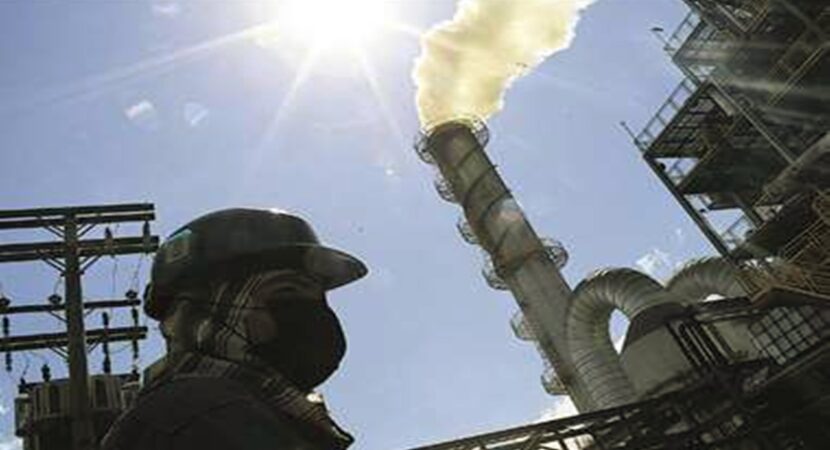
A reliable gas detection system is important to ensure industrial operation safety, product quality and compliance with local legislation.
Danger can be invisible. Gas leaks in industries can cause production stoppages, creating financial problems, in addition to accidents of catastrophic proportions, even with the cost of lives.
Read also
- 50 companies in Canada recruit Brazilians for many job openings in industry, manufacturing, healthcare and more; there is no age limit for applicants
- Petrobras and the Government of Rio close next Friday (10/09) an agreement for the assignment of Comperj areas
- European multinational offers for this month of September more than 200 job openings in RJ, SP, PE, BA, MG and more
- Raízen calls for vacancies in ethanol plants; you don't need to have professional experience or know English or Excel
The use or generation of gases in industrial processes is not limited to conventional gases, such as the natural gas we know. Industries in the food and beverage industry, such as large refrigerators and breweries, use refrigerant gases – ammonia, R-123 or R-404A – in their daily operations, to ensure the refrigeration and preservation of their products.
In the event of a leak of the gas used in the refrigeration system, and depending on its proportion, it is necessary to interdict a large part of the industrial plant, with the withdrawal of employees and the stoppage of activities until the entire affected area is detoxified, causing inestimable damage.
“An ammonia leak, for example, can cause anything from intoxication in employees to even large explosions, putting the lives of these workers at risk and generating incalculable damage,” says Felipe Claudiano, manager of Fixed and Portable Gas Detection Products at MSA Safety, a multinational global leader in the development, manufacture and supply of safety products.
Therefore, industrial plants need an efficient system capable of early detection of refrigerant gas leaks. NR 36, a regulatory standard for occupational health and safety – especially for industries and companies that slaughter and process meat and derivatives – establishes the minimum requirements for the assessment, control and monitoring of existing risks and brings, among the various measures, the obligation to implement mechanisms for the early detection of leaks at critical points, coupled with an alarm system and installation of a control panel for the refrigeration system, among the fundamental factors of industrial safety.
Devices that control and monitor gas leaks minimize the risk of major accidents
There are several devices that help control and monitor gas leaks, minimizing the risk of major accidents. They are fixed detectors that, when installed in strategic locations, capture refrigerant gas leaks and issue alerts to auxiliary control systems, such as sirens or ventilation systems.
An excellent performing point gas detector is the X5000 from MSA Safety, which identifies the leak from chemical sensors that react in the presence of the target gas, such as ammonia. A detector like this has a useful life of approximately five years, unlike conventional detectors with a limited duration, with the need for constant maintenance and replacement of sensors to guarantee its operation.
The Chillgard 5000, also from MSA, is an aspirated system that monitors up to 16 points using infrared photoacoustic technology, detecting ammonia or up to 38 different refrigerant gases. The detector features a color touch interface with simple visual indication of when an alarm, fault or event has occurred, maintaining an easy-to-access event and diagnostic log that allows for quick troubleshooting. The unique adjustment/calibration port facilitates any type of testing on the detector and avoids the need for working at heights common with conventional point detectors.
Industries strictly follow protocols against gas leaks
A survey by MSA indicated that the Chillgard 5000 can generate savings of up to 50% over the years compared to a conventional electrochemical system. This is what happens with a partner that has installed fifty ammonia detection points for four years. The company chose to invest in Chillgard; even though it was a bigger investment at the beginning, in the following years the amount spent was reversed in great savings.
According to the specialist, for every need, application or size of the area at risk of leaks, there are systems that help in the best monitoring coverage, such as perimeter detection made from open beam detectors, with emitter and receiver, laser, in areas of constant risk of up to 120 meters of perimeter for the detection of ammonia. With a disruptive laser technology, MSA's ELDS, for example, is a maintenance-free detector that does not generate false alarms, which is common in applications with conventional detectors in extreme use.
“There are solutions for all 'sizes' and needs. The most important thing is that the industries strictly follow the protocols against gas leaks and understand that these detection systems are investments and not just costs”, emphasizes Felipe Claudiano.











